Chile’s El Pelillo algae in
danger of extinction
During my first year as a marine biology student, I had the chance to travel to southern Chile, where algae farming is one of the main ways fishermen make their living. I went to Puerto Montt, where the exploitation of the seaweed Gracilaria chilensis, commonly known as el Pelillo, is very important. Large pieces of land and sea are used to produce it and the locals use artisanal methods to harvest the seaweed. Talking to the locals, I understood how crucial these algae were economically-speaking. And the seaweed makes global waves. From El Pelillo, industries worldwide obtain the primary product to produce agar, a substance used in desserts, soups, and brewing.
The use of El Pelillo algae dates back thousands of years. Archeological evidence found in Monte Verde, near Puerto Montt, indicates that El Pelillo was used as food and medicine by the first inhabitants of southern Chile around 14,600 years ago. More recently its use became more industrial. By 1970, beds of this algae where being harvested for agar production, transforming this species into one of the most important commercial algae of Chile. But, in almost a decade, its production has collapsed due to overexploitation. In 2013, Chile exported 58,513 kilograms of El Pelillo algae, according to David Garland Rodriguez, a biologist with Chile’s national fisheries service SERNAPESCA. In 2014, that number had fallen to 30,050 kilograms. But why?

A new study tracing the evolutionary history of El Pelillo concludes that the Chilean species may have been doomed from the start. The researchers, part of an international team of French and Chilean scientists that have been collaborating since 1997, reconstructed the history of the Pelillo by combining genetic and archeological information to understand the Pelillo current state in Chile. Their analysis has demonstrated that the algae found in Chile is in fact a subsample of the genetic diversity of New Zealand, where this and other species of the genus Gracilaria are also present. They published their findings in the journal PLoS ONE under the title “Tracing the Trans-Pacific Evolutionary History of Domesticated Seaweed (Gracilaria chilensis) with Archaeological and Genetic Data.”
But how did the algae get to Chile? The scientists found that the Chilean El Pelillo algae shares a lot in common with algae populations on the eastern coast of New Zealand. Based on genetic analysis, the researchers concluded that Gracilaria chilensis originated in New Zealand and was transported to Chile around the end of the last ice age, around 18,000 years ago. During this period, ocean currents intensified, allowing many species of algae and invertebrate organisms to float from New Zealand to Chile.

How was this long journey possible? Gracilaria chilensis has great phenotypic plasticity, which is to say that it is capable of surviving long periods of time outside of the water. This means it could be transported and dispersed by attaching itself to logs or other floating algae.
According to Sylvain Faugeron, a professor at Pontificia Universidad Católica de Chile and member of the team conducting this research, when comparing the populations of G. chilensis that exist in Chile with those in New Zealand, a lower genetic diversity is evident in Chilean populations. This suggests that in Chile, the population had suffered the evolutionary process known as “bottleneck”.
The research aimed to distinguish between two bottlenecks: the first one, the moment of the introduction of the algae to Chile, was studied using fragments taken from a wild New Zealand population. The second and more recent is associated to overexploitation and/or domestication of the species in Chile. Each one of these processes leaves a particular mark on the genetic diversity pattern, which can be analyzed using the characterization of all the diversity that exists in Chile. Results indicate that the introduction of the species to Chile as well as its overexploitation has left its marks. Even more, the effects of these different processes accumulated, leaving the algae with a much reduced genetic diversity.
The authors concluded that the Pelillo in Chile, due to its colonization history as well as its domestication using clones to its production, has reached a critical point concerning its genetic variability. The lack of genetic diversity has as a consequence the limitation of the genetic improvement of the clones used for the algae production by means of artificial selection. It also hinders the possibilities of the species’ adaptation to the major changes the coastal environment is suffering (climate change, coastal border use, pollution, introduction of pathogens and other plagues, etc). We are one step away from losing a valuable resource, because as it has been explained, the reduction of the genetic variability, could take this species to a vortex of extinction.

Understanding how the overexploitation of a species can lead to its extinction by reducing its genetic diversity is crucial when trying to maintain a sustainable system of production. Genetic diversity in species, is what allows them to adapt to environmental changes, it is what gives them resilience. By with more genetic diversity, a species has more tools to face new perturbations in the place they live. Domesticating the algae has gradually reduced this advantage. By handpicking offspring with the specific genes farmers want, humans have reduced the algae’s genetic diversity.
This is bad not only from an ecological point of view but from an economic one as well. The extinction of this algae could leave hundreds of people without a way of life. Many fishermen in Chile rely on the exportation of this algae to sustain their families—for which they reap 10 cents per kilo, says SERNAPESCA’s Rodriguez—and losing El Pelillo could be devastating. It is true that there are other species they may turn to, but that’s not the path to take. We must protect our resources, and not treat them as if they were limitless.
Pamela Padilla is a marine biologist at the Pontificia Universidad Católica de Chile. She is currently working with the Centro de Conservación Marina in Chile.